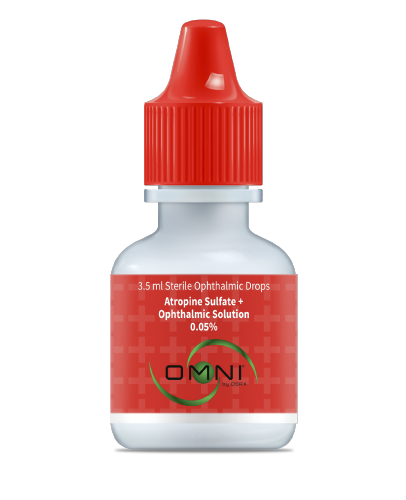| Atropine (cyloplegia) | |||
|---|---|---|---|
| Dosing (cycloplegia) | 1 drop 0.5% to 1% bid for 1 or 2 days before examination. (Consider cyclopentolate 1% administered 30 min before refraction.) |
||
| Dosing (uveitis/iritis) | 1 or 2 drops up to 4 times daily (1% bid typically) | ||
| Chem Specs | atropine sulfate 1% Common prepared concentrations: 0.01%, 0.25%, 0.50% | ||
| Quantities | 2,5,15ml | ||
| Cost | |||
| Class | anticholinergic | ||
| Action | Competitive antagonist for the muscarinic acetylcholine receptor. | ||
| Usage | Indicated for cycloplegic refraction or for pupil dilation in acute iritis and uveitis. Used off label to prevent myopic progression. |
||
| Warnings | Increased susceptibility in infants, young children, and in children with blond hair, blue eyes, Down's syndrome, spastic paralysis, or brain damage. Ointment form thought to reduce systemic absorption. |
||
| Contraindications | Primary glaucoma or a predisposition toward narrow angle glaucoma. Iris lens synechiae. Pediatric patients who have previously had a severe systemic reaction to atropine. The elderly and others where undiagnosed glaucoma or excessive pressure in the eye may be present. Hypersensitivity to atropine or product contents. |
||
| Pediatric use | Not recommended under 3 months. Limit to 1 drop per eye per day under 3 years. | ||
| Pregnancy | Category C. It is not known whether topically administered atropine sulfate can cause fetal harm. | ||
| Peak mydriasis 30-40 min. Peak cycloplegia 1-2 hrs. Recovery 6-12 days. Nasolacrimal pressure recommended. |
|||
| Systemic anticholinergics may be associated with increased risk of dementia.1 | |||
